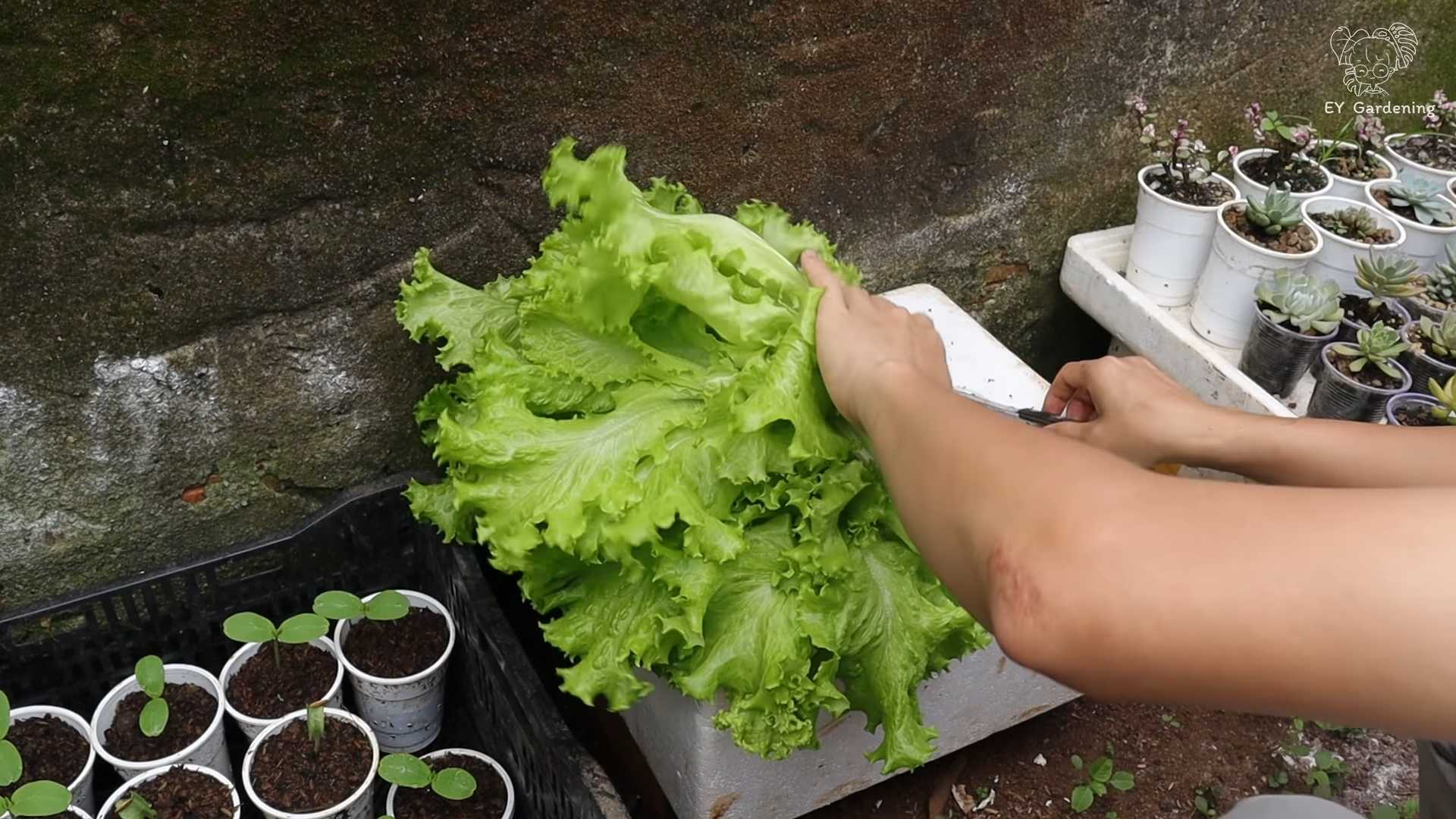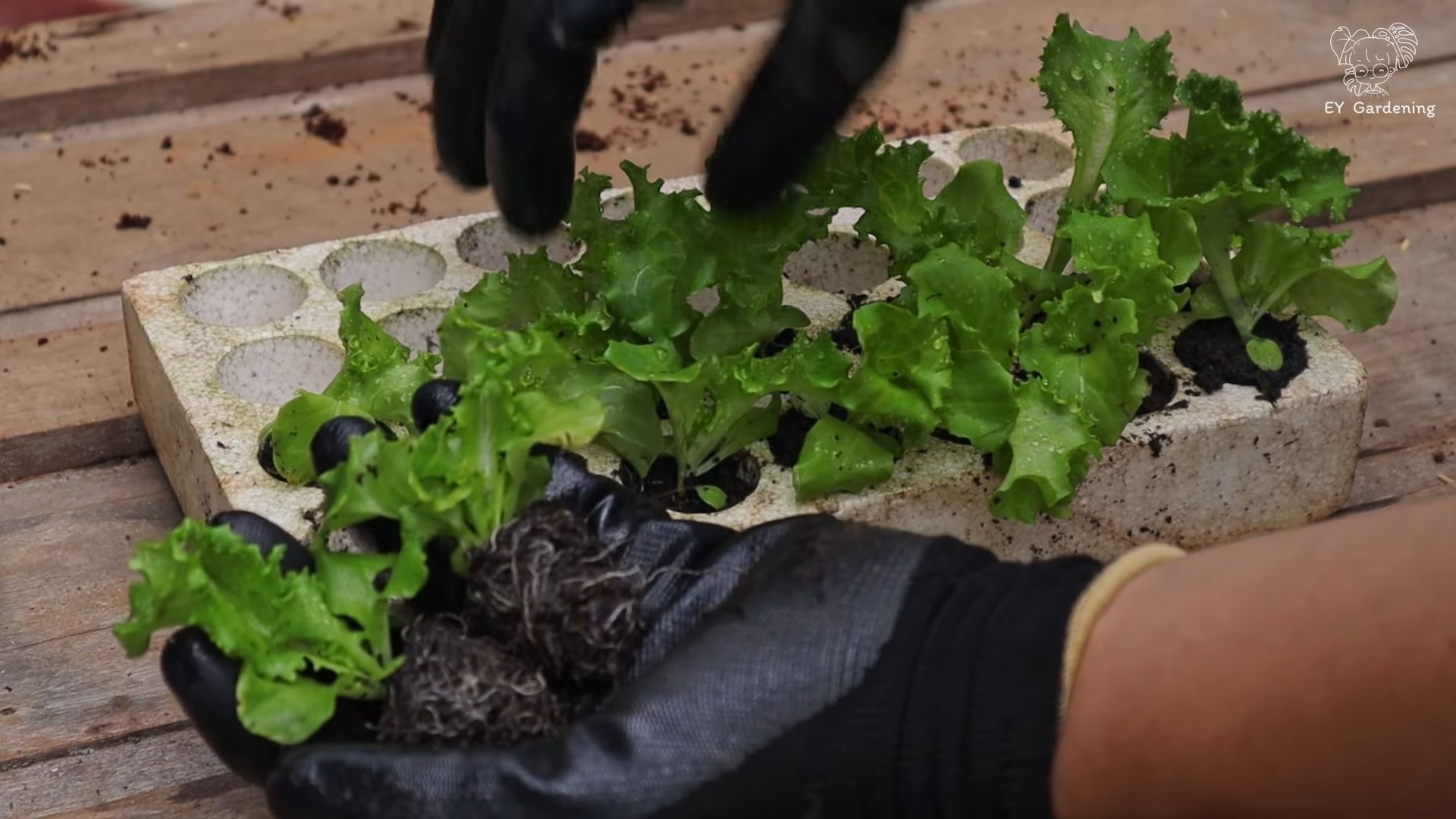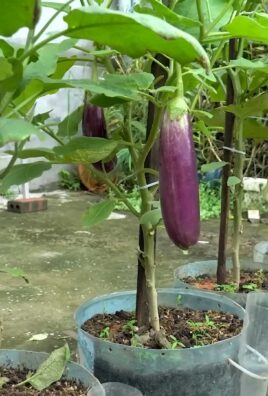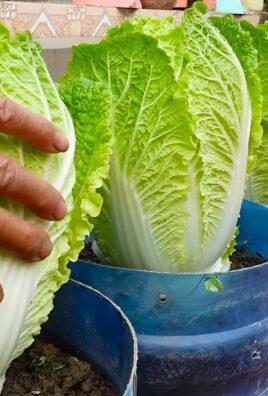Indoor Lettuce Growing: Imagine fresh, crisp lettuce, bursting with flavor, available right at your fingertips, no matter the season! Forget those sad, wilted greens from the grocery store. I’m here to tell you that cultivating your own vibrant lettuce patch indoors is not only possible, but surprisingly easy and rewarding.
For centuries, humans have sought ways to extend the growing season and bring the bounty of the garden indoors. From ancient Roman orangeries to Victorian-era conservatories, the desire for fresh produce year-round has driven innovation. Now, with readily available grow lights and simple hydroponic systems, indoor lettuce growing is accessible to everyone, regardless of space or experience.
Why should you jump on the indoor lettuce bandwagon? Well, think about it: you control the environment, eliminating pests, diseases, and unpredictable weather. Plus, you’ll drastically reduce your carbon footprint by cutting down on transportation emissions. But most importantly, you’ll have access to the freshest, most nutritious lettuce imaginable, adding a vibrant touch to your meals and a satisfying sense of accomplishment to your day. In this article, I’ll share my favorite DIY tricks and hacks to help you create a thriving indoor lettuce garden, even if you’ve never grown anything before. Get ready to ditch the store-bought greens and embrace the joy of homegrown goodness!

Grow Your Own Salad: A Beginner’s Guide to Indoor Lettuce Gardening
Hey there, fellow plant enthusiasts! Ever dreamt of having fresh, crisp lettuce right at your fingertips, no matter the season? Well, I’m here to tell you it’s totally achievable with a little DIY magic! Growing lettuce indoors is easier than you might think, and I’m going to walk you through every step of the process. Get ready to enjoy delicious, homegrown salads all year round!
What You’ll Need: The Essential Supplies
Before we dive in, let’s gather our supplies. This is crucial for a smooth and successful lettuce-growing journey. Don’t worry, most of these items are readily available and won’t break the bank.
* **Lettuce Seeds:** Choose your favorite varieties! Romaine, butterhead, loose-leaf – the possibilities are endless. I personally love a mix for variety in my salads.
* **Growing Medium:** You have a few options here. Seed starting mix is great for germination. Potting mix works well for the entire growing process. Coco coir is another excellent choice, especially if you’re looking for a sustainable option. Avoid using garden soil, as it can be too heavy and may contain pests or diseases.
* **Containers:** You can use anything from seed trays to pots to repurposed containers like yogurt cups or plastic tubs. Just make sure they have drainage holes!
* **Grow Lights:** This is essential, especially if you don’t have a super sunny windowsill. LED grow lights are energy-efficient and work wonders.
* **Watering Can or Spray Bottle:** For gentle watering.
* **Optional: Seedling Heat Mat:** This can speed up germination, but it’s not strictly necessary.
* **Optional: Liquid Fertilizer:** A balanced liquid fertilizer will help your lettuce thrive.
Step-by-Step Guide: From Seed to Salad
Okay, let’s get our hands dirty! Here’s a detailed guide to growing lettuce indoors:
1. **Sowing the Seeds:**
* Fill your chosen container with your growing medium, leaving about an inch of space at the top.
* Moisten the soil thoroughly. It should be damp, not soggy.
* Sprinkle the lettuce seeds evenly over the surface of the soil. Don’t overcrowd them!
* Lightly cover the seeds with a thin layer of soil. Lettuce seeds need light to germinate, so don’t bury them too deep.
* Gently water the surface again using a spray bottle to avoid disturbing the seeds.
* If you’re using a seedling heat mat, place your container on it. Otherwise, find a warm spot in your home.
* Cover the container with a clear plastic lid or plastic wrap to create a humid environment. This will help with germination.
2. **Germination Time:**
* Keep the soil consistently moist, but not waterlogged. Check it daily and mist with water as needed.
* Remove the plastic lid or wrap once the seeds start to germinate. This usually takes about 7-14 days, depending on the variety and temperature.
* Once the seedlings emerge, place them under your grow lights.
3. **Providing Light:**
* Position your grow lights about 4-6 inches above the seedlings.
* Keep the lights on for 12-14 hours per day. Lettuce needs plenty of light to grow properly.
* Adjust the height of the lights as the seedlings grow to maintain the optimal distance.
4. **Watering and Feeding:**
* Water your lettuce plants when the top inch of soil feels dry to the touch.
* Water thoroughly, allowing excess water to drain out of the drainage holes.
* Avoid overwatering, as this can lead to root rot.
* Once your lettuce plants have developed a few true leaves (the leaves that look like miniature lettuce leaves), you can start feeding them with a diluted liquid fertilizer. Follow the instructions on the fertilizer label. I usually fertilize every two weeks.
5. **Thinning the Seedlings:**
* If you sowed your seeds densely, you’ll need to thin the seedlings to give them enough space to grow.
* Once the seedlings have a few true leaves, carefully snip off the weaker seedlings at the soil line, leaving about 2-3 inches between the remaining plants.
* Don’t pull the seedlings out, as this can disturb the roots of the other plants.
6. **Transplanting (Optional):**
* If you started your seeds in seed trays, you’ll need to transplant the seedlings into larger pots once they’re big enough to handle.
* Gently remove the seedlings from the seed tray, being careful not to damage the roots.
* Plant each seedling in a separate pot filled with potting mix.
* Water thoroughly after transplanting.
7. **Harvesting Your Lettuce:**
* You can start harvesting your lettuce once the leaves are big enough to eat. This usually takes about 4-6 weeks from sowing.
* There are two main ways to harvest lettuce:
* **Cut-and-Come-Again:** This method involves harvesting the outer leaves of the plant, leaving the inner leaves to continue growing. This allows you to harvest lettuce multiple times from the same plant.
* **Head Harvest:** This method involves harvesting the entire head of lettuce at once. This is best for head-forming varieties like romaine.
* To harvest, simply use a sharp knife or scissors to cut the leaves or head of lettuce.
* Wash the lettuce thoroughly before eating.
Troubleshooting: Common Issues and Solutions
Even with the best care, you might encounter a few challenges along the way. Here are some common issues and how to address them:
* **Leggy Seedlings:** This means your seedlings are stretching towards the light and becoming weak and spindly. This is usually caused by insufficient light. Make sure your grow lights are close enough to the seedlings and that they’re on for enough hours per day.
* **Yellowing Leaves:** This can be caused by a number of factors, including overwatering, underwatering, nutrient deficiencies, or pests. Check the soil moisture and adjust your watering accordingly. If you suspect a nutrient deficiency, try fertilizing with a balanced liquid fertilizer. Inspect the leaves for pests and treat them accordingly.
* **Pests:** Aphids, spider mites, and whiteflies are common pests that can attack lettuce plants. Inspect your plants regularly for signs of infestation. You can control pests by handpicking them off the plants, spraying them with insecticidal soap, or using other organic pest control methods.
* **Root Rot:** This is caused by overwatering and poor drainage. Make sure your containers have drainage holes and that you’re not overwatering your plants. If you suspect root rot, transplant your lettuce into fresh soil and be more careful with watering.
Choosing the Right Lettuce Variety for Indoor Growing
Not all lettuce varieties are created equal when it comes to indoor growing. Some varieties are better suited for containers and indoor conditions than others. Here are a few of my favorites:
* **Butterhead Lettuce (e.g., Buttercrunch, Tom Thumb):** These varieties are compact and easy to grow in containers. They have a mild, buttery flavor and a soft texture.
* **Loose-Leaf Lettuce (e.g., Black Seeded Simpson, Red Sails):** These varieties don’t form heads and are easy to harvest using the cut-and-come-again method. They come in a variety of colors and textures.
* **Romaine Lettuce (e.g., Little Gem, Paris Island Cos):** These varieties are more upright and require a bit more space, but they’re still manageable in containers. They have a crisp texture and a slightly bitter flavor.
* **Mesclun Mix:** This is a mix of different lettuce varieties and other greens, such as arugula and spinach. It’s a great way to add variety to your salads.
Optimizing Your Indoor Lettuce Garden
Want to take your indoor lettuce garden to the next level? Here are a few tips for optimizing your growing conditions:
* **Temperature:** Lettuce prefers cool temperatures, ideally between 60-70°F (15-21°C). Avoid placing your lettuce plants near heat sources, such as radiators or vents.
* **Air Circulation:** Good air circulation helps prevent fungal diseases. Use a small fan to circulate the air around your plants.
* **Humidity:** Lettuce prefers moderate humidity. If the air in your home is very dry, you can increase the humidity by placing a tray of water near your plants or using a humidifier.
* **Succession Planting:** To ensure a continuous supply of lettuce, sow new seeds every few weeks. This is called succession planting.
* **Rotating Your Crops:** If you’re growing lettuce in the same containers year after year, it’s a good idea to rotate your crops. This means planting different types of plants in the containers each year to prevent the buildup of pests and diseases.
Enjoying Your Homegrown Lettuce
The best part about growing your own lettuce is

Conclusion
So, there you have it! Growing your own lettuce indoors is not only achievable but also incredibly rewarding. Forget those limp, overpriced greens from the grocery store. With a little effort and this simple DIY trick, you can have a constant supply of fresh, crisp lettuce right at your fingertips.
Why is this a must-try? Because it puts you in control. You know exactly where your food is coming from, what (or rather, what isn’t) going into it, and you get the unparalleled satisfaction of nurturing something from seed to salad. Plus, it’s a fantastic way to reduce your carbon footprint by cutting down on transportation and packaging waste.
But the best part? The possibilities are endless! Experiment with different varieties of lettuce. Try a mix of romaine, butterhead, and loose-leaf for a vibrant and flavorful salad. You can even add other leafy greens like spinach or arugula to your indoor garden. Consider using different containers – from repurposed plastic tubs to stylish ceramic pots – to match your décor.
For a spicier kick, try adding a few radish seeds to your lettuce mix. The radishes will mature quickly and add a peppery bite to your salads. You can also experiment with different lighting setups. While a sunny windowsill works well, a grow light can provide consistent and optimal light, especially during the darker winter months.
Don’t be afraid to get creative with your soil mix, too. Adding compost or worm castings can boost the nutrient content and improve drainage. Just remember to avoid overwatering, as this can lead to root rot.
Ultimately, this DIY indoor lettuce growing method is about more than just saving money or having access to fresh produce. It’s about connecting with nature, learning new skills, and enjoying the simple pleasure of growing your own food. It’s about embracing a more sustainable and self-sufficient lifestyle.
We are confident that once you taste the difference between store-bought and homegrown lettuce, you’ll be hooked. The flavor is simply unmatched. And the best part is, you can enjoy fresh salads year-round, regardless of the weather outside.
So, what are you waiting for? Gather your supplies, follow the steps outlined above, and get ready to embark on your indoor lettuce growing adventure. We encourage you to try this DIY trick and share your experiences with us! Let us know what varieties you’re growing, what challenges you’ve faced, and what successes you’ve celebrated. Share your photos and tips in the comments below. We can’t wait to see your indoor gardens flourish!
Frequently Asked Questions (FAQ)
What kind of lettuce grows best indoors?
Loose-leaf varieties like Black Seeded Simpson, Salad Bowl, and Red Sails are generally considered the easiest to grow indoors. They mature quickly and can be harvested continuously, meaning you can snip off leaves as needed without harvesting the entire plant at once. Butterhead varieties like Buttercrunch and romaine lettuce also do well indoors, but they may take a bit longer to mature. Experiment to see what works best for your environment and taste preferences.
How much light does indoor lettuce need?
Lettuce needs at least 6 hours of direct sunlight per day. If you don’t have a sunny windowsill, you can supplement with a grow light. LED grow lights are energy-efficient and provide the full spectrum of light that plants need to thrive. Position the grow light a few inches above the lettuce seedlings and adjust as they grow. If your lettuce is getting leggy (tall and spindly), it’s likely not getting enough light.
What kind of soil should I use for indoor lettuce growing?
Use a well-draining potting mix that is specifically formulated for vegetables. Avoid using garden soil, as it can be too heavy and may contain pests or diseases. You can also amend your potting mix with compost or worm castings to improve its nutrient content and drainage. A good mix would be equal parts potting mix, compost, and perlite or vermiculite.
How often should I water my indoor lettuce?
Water your lettuce when the top inch of soil feels dry to the touch. Avoid overwatering, as this can lead to root rot. Water deeply, allowing the excess water to drain out of the bottom of the container. Check the soil moisture regularly, especially during hot or dry weather. A good rule of thumb is to water every 2-3 days, but this will vary depending on your environment.
How do I harvest indoor lettuce?
For loose-leaf varieties, you can harvest individual leaves as needed, starting with the outer leaves. This is known as “cut-and-come-again” harvesting. For butterhead and romaine varieties, you can harvest the entire head of lettuce when it is mature. Simply cut the head off at the base of the plant.
What are some common problems with indoor lettuce growing?
Some common problems include aphids, whiteflies, and fungal diseases. Aphids and whiteflies can be controlled with insecticidal soap or neem oil. Fungal diseases can be prevented by ensuring good air circulation and avoiding overwatering. If you notice any signs of pests or diseases, take action immediately to prevent them from spreading.
Can I grow lettuce from seed indoors?
Yes, you can easily grow lettuce from seed indoors. Start by sowing the seeds in a seed-starting tray or small pots filled with seed-starting mix. Keep the soil moist and warm, and the seeds should germinate within a few days. Once the seedlings have developed a few true leaves, you can transplant them into larger containers.
How long does it take for lettuce to grow indoors?
Lettuce typically takes 30-60 days to mature, depending on the variety and growing conditions. Loose-leaf varieties mature more quickly than head lettuce varieties. You can start harvesting leaves as soon as they are large enough to eat.
Can I grow lettuce indoors year-round?
Yes, you can grow lettuce indoors year-round, as long as you provide adequate light and temperature. During the winter months, you may need to supplement with a grow light to ensure that your lettuce gets enough light. Keep the temperature between 60-70°F (15-21°C) for optimal growth.
What are the benefits of growing lettuce indoors?
Growing lettuce indoors offers several benefits, including access to fresh, organic produce year-round, reduced carbon footprint, and the satisfaction of growing your own food. It’s also a great way to add some greenery to your home and improve your indoor air quality. Plus, homegrown lettuce simply tastes better than store-bought lettuce!




Leave a Comment